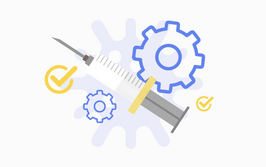
Learning from Failure
Cardiovascular toxicity often hinders success – are companies picking the wrong compounds?
Prolific novelist and academic CS Lewis once said, “Failures are finger posts on the road to achievement.” (Given pharma’s drug failure rate, the road ahead must truly be paved in gold.)
When it comes to drug safety failure, toxicity – especially to the cardiovascular system – is a major stumbling block. In an effort to learn from past failures and help improve success rates, ApconiX and PhysioStim have teamed up to create a European center of excellence for preclinical cardiovascular safety evaluation. The companies hope to provide high-throughput screening to help pharma companies decide whether their compound is on the right track to pass safety tests. Here, we speak with a spokesperson from ApconiX to
learn more.
Why do so many drugs fail in development?
There’s a wealth of evidence indicating that drugs fail in development, not because they don’t work therapeutically, but because they are toxic. When drug development enters the laboratory, we’re dealing with systems in isolation and only two dimensions, which can’t match the complexity of the human body – where nothing acts in isolation. New technologies and techniques are helping, but are still topics of research; for example, there have been great strides in mixing cells together and reflecting the structure of a kidney or the brain. We are only just learning to generate tissues in three dimensions and working with different cell types. Looking at one cell type is never going to work very well.
What are the most common toxicity problems?
Cardiovascular toxicity will always be number one, followed by toxicity of the central nervous system, liver, lungs, and kidneys. A lot of work has gone into cardiovascular toxicity testing, especially with ion channel testing. However, the necessary level of understanding and interpretation of safety data is often lacking in projects, which can ultimately lead to project closure. Cardiovascular toxicity is the primary safety-related cause of failure in drug development, which is why our alliance will seek to eliminate potentially toxic compounds at an early stage, while helping companies focus on targets that have greater chances of success. We will focus on a range of cardiac safety studies including automated electrophysiology providing hERG screening and CiPA ion channel assays, manual patch-clamp assays (hERG, hNav1.5, hCav1.2), action potential recordings, Langendorff models and cardiac contractility studies.
Any top tips for choosing the right compounds to take forward?
There is much we can learn from failure. The majority of drug discovery programs fail to get a new drug to market – but do we take full advantage of the learnings? The relevant information is typically difficult to access and remains unpublished, so we don’t learn from our mistakes.
My advice is to not bury your head in the sand and ignore toxicology because you believe it’s just going to be “bad news”. Investigate it earlier, understand the problem and engage with experts. You might be able to get rid of the toxicity and put plans in place to mitigate the risk. If you understand the data then there may be something you can do about it.
- Apconix, “The European Centre of Excellence for preclinical cardiovascular electrophysiology”, (2017). Available at bit.ly/2zKD4OP. Last accessed November 15, 2017.
My fascination with science, gaming, and writing led to my studying biology at university, while simultaneously working as an online games journalist. After university, I travelled across Europe, working on a novel and developing a game, before finding my way to Texere. As Associate Editor, I’m evolving my loves of science and writing, while continuing to pursue my passion for gaming and creative writing in a personal capacity.



















